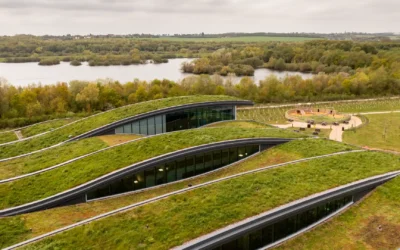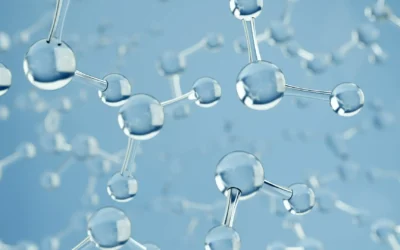• The European Union (EU) is witnessing a surge in investments and initiatives aimed at integrating green hydrogen technologies, driven by the global imperative to combat climate change.
• Significant funding has been allocated to support the development of green hydrogen, including the establishment of the Clean Hydrogen Partnership and the European Hydrogen Bank, along with substantial public and private investments.
• The EU is actively strengthening its electrolyzer supply chain, with an emphasis on expanding manufacturing capacities within the region, which is expected to drive down production costs and accelerate the adoption of green hydrogen technologies.
The surge in enthusiasm surrounding the integration of green hydrogen technologies within the European Union stems, in part, from the worldwide endeavor to combat climate change. The EU has established formidable objectives in curbing greenhouse gas emissions, and hydrogen is recognized as an essential element in attaining these targets. Consequently, the EU is committing substantial resources towards the advancement of green hydrogen technologies, particularly electrolyzers, which is anticipated to invigorate the EU electrolyzer market in the forthcoming years.
The advent of green hydrogen, a technology characterized by zero emissions, will assume a prominent role in the process of decarbonizing various sectors within the EU.
Investments Driving the EU Green Hydrogen Market
-
EU’s Clean Hydrogen Partnership (2021-2027)
Inaugurated in 2021, this extraordinary alliance represents a distinctive collaboration between the public and private sectors, dedicated to fostering research and innovation endeavors in the realm of hydrogen technologies across Europe. It encompasses a remarkable sum of 1 billion EUR in public funding, with the initial call for proposals for hydrogen research projects, amounting to 300 million EUR, being launched in 2022. Building upon this momentum, the Clean Hydrogen Partnership, in the year 2023, unveiled an additional call for proposals, injecting a substantial sum of 195 million EUR into hydrogen research projects, with a noteworthy allocation of 49 million EUR specifically dedicated to the advancement of renewable hydrogen production.
-
IPCEI Hy2Use
In the year 2022, the European Commission granted its endorsement to the remarkable hydrogen project known as IPCEI Hy2Use, whereby an impressive sum of up to 5.2 billion EUR in public funding was allocated. This substantial financial support was designated to facilitate the establishment of expansive electrolyzer installations and the development of an extensive transport infrastructure, both integral to the production, storage, and distribution of renewable and low-carbon hydrogen. The aforementioned amount has been made available through national governments, manifesting as subsidies for the selected projects. As a result of this unprecedented commitment, it is anticipated that an additional influx of 8.8 billion EUR in private investments will be mobilized, unlocking further potential and opportunities for the realization of this visionary endeavor.
-
European Hydrogen Bank
In the year 2023, the inauguration of the European Hydrogen Bank heralded a significant milestone in fostering the adoption of renewable hydrogen throughout the European Union, while also facilitating its importation from international allies. With an impressive budget allocation of 3 billion EUR, this visionary initiative aims to provide substantial support and impetus to the flourishing hydrogen energy market. Specifically, the first Hydrogen Bank auction is earmarked to receive a dedicated sum of 800 million EUR, signifying a pivotal step towards accelerating the deployment of renewable hydrogen technologies and fueling the transition to a sustainable energy future.
Within the European Union, there is a discernible surge in endeavors centered around green hydrogen, encompassing a multitude of operational and planned projects, as well as substantial investments from both the public and private sectors. Drawing upon prevailing forecasts, it is anticipated that the EU electrolyzer market will witness an influx of investments exceeding 33 billion EUR by the year 2030. This remarkable commitment underscores the collective determination to harness the transformative potential of green hydrogen and signifies a resolute step towards a sustainable and decarbonized future.
National Targets for Implementation of Green H2 Technologies
• EU Hydrogen Strategy: Launched in 2021, the EU Hydrogen Strategy aims to install 6 GW electrolyzer capacity in the EU by 2024 and 40 GW electrolyzer capacity by 2030.
• Hydrogen Accelerator Program: It aims to produce 10 million tonnes of green hydrogen domestically and also import 10 million tonnes of renewable hydrogen in the EU by 2030.
• Several European countries have published their National Hydrogen Strategies (NHS) during the 2020-2022 time period. The collective targets of these European countries for installing electrolyzer capacities amount to more than 35 GW till 2030.
Regulations Supporting Electrolyzer Deployment in the EU
• EU Delegated Acts: Launched in 2023, it sets out rules that hydrogen producers must abide by to be able to label their product as renewable.
- Temporal Correlation:
Under the provisions of this act, known as the temporal correlation principle, a specific framework is established to govern the generation of renewable power utilized in Power Purchase Agreements (PPAs) for the production of green hydrogen. According to this principle, until the 31st of December 2027, the renewable power procured for this purpose must be generated within the same month that the electrolyzer commenced its operations. However, there exists an exemption to this rule, which applies when hydrogen production takes place during a one-hour window in which the clearing price for power resulting from the day-ahead market falls below or equals €20/MWh, or below 0.36 times the value of the EU Emissions Trading Systems (ETS).
In the subsequent phase of this act, commencing on the 1st of January 2028, a refined provision is introduced, stipulating that the renewable power acquired through PPAs to produce green hydrogen should be generated within the same hour that the electrolyzer becomes operational. Nonetheless, the exemption, as previously outlined, will continue to be applicable in this phase as well, affording flexibility under circumstances where the qualifying conditions are met.
- Additionality:
Effective as of the 1st of January 2028, this act establishes a requirement that the green hydrogen facility must be directly linked to either a newly established renewable asset or an existing renewable asset that has not commenced operations prior to a timeframe of 36 months before the establishment of the hydrogen plant. Furthermore, the renewable asset in question must not have received any form of financial assistance from the European Union (EU).
• Alternative Fuel Infrastructure Regulation (AFIR):
Introduced in the year 2022, this initiative establishes a comprehensive framework outlining guidelines for the construction of hydrogen refueling stations. This regulatory measure possesses the potential to exert a certain degree of influence on the electrolyzer industry, as these electrochemical devices will play a crucial role in facilitating on-site production of green hydrogen at the refueling stations. Even in cases where hydrogen is delivered to these stations, the presence of electrolyzers remains imperative to meet the additional demand for clean hydrogen emanating from these refueling points.
Strengthening the European Green Hydrogen Supply Chain
Analogous to the circumstances observed in the United States, the European Union encounters a similar scenario wherein the domestic capacity for electrolyzer manufacturing is constrained. Consequently, there exists a reliance on imports from various nations, primarily Asian countries, thereby amplifying the vulnerability to potential disruptions within the supply chain. Nevertheless, a promising development has emerged in recent times as several esteemed electrolyzer manufacturing companies have divulged their intentions to augment their existing production capacities or establish new manufacturing facilities within the EU. A selection of noteworthy instances illustrating this trend includes:
• In 2022, the European Commission signed a joint declaration with 20 major European electrolyzer manufacturers which sets out a target for electrolyzer manufacturers in Europe to increase their manufacturing capacity tenfold to 17.5 GW/year.
• In 2022, the Belgian electrolyzer manufacturer, John Cockerill Group (JCG), announced plans to increase its annual production capacity of PEM electrolyzers to 8 GW up from 350 MW today.
• In 2022, Norway-based company, NEL Hydrogen, unveiled plans to build 10 GW of electrolyzer manufacturing capacity by 2025.
• Siemens also started building a multi-GW factory in Berlin for industrial scale production of its PEM electrolyzers whereas Cummins also announced plans to start the construction of its new GW electrolyzer manufacturing plant in Guadalajara, Spain.
• In 2023, H-TEC SYSTEMS, a subsidiary of MAN Energy Solutions, held the groundbreaking ceremony for its new PEM electrolyzer stack production facility in Hamburg, Germany. By 2024, the new location will automate the production of PEM electrolysis stacks with a potential total electrolysis capacity of 5 GW.
Looking Ahead
Anticipated within the European Union is a notable surge in the growth trajectory of the green hydrogen market in the forthcoming years. This surge is fueled by an escalating influx of investments directed towards fortifying the electrolyzer supply chain within the EU, as both new enterprises enter the market and existing entities embark upon expansive expansion endeavors. The profound impact of these investments is expected to catalyze the establishment of cutting-edge manufacturing facilities and the substantial augmentation of production capacities.
As manufacturing capacities experience a remarkable upswing, a consequential outcome is the substantial reduction in costs associated with green hydrogen production. This transformative shift is set to be further propelled by the optimization of the electrolyzer supply chain, which will assume a pivotal role in fostering the widespread adoption of green hydrogen technologies across the EU. Collectively, these developments engender a landscape ripe with opportunities, paving the way for a more sustainable and environmentally conscious energy paradigm within the European Union.
Hydrogen Service Overview
The research presented in this article is from PTR's Hydrogen service. For information about this service please submit a request shown below.
Contact Sales:
Europe
+49-89-12250950
Americas
+1 408-604-0522
Japan
+81-80-7808-1378
GCC/Rest of APAC
+971-58-1602441
More about our:
Hydrogen Market Research
Recent Insights
Sustainability Across Sectors: Highlights from GreenTech Festival 2024
Recently, I had the privilege to attend and present at the Greentech Festival, an excellent event in the realm of sustainability. This influential...
US and EU Strategies in Smart Buildings
Download Service Overview The EU and USA aim to decarbonize their building sectors to meet emission reduction targets. Initiatives like the Home...
Setting Sail with Hydrogen: Challenges, Opportunities, Policies, and Industry Initiatives
The maritime industry faces intense pressure to reduce greenhouse gas (GHG) emissions, curb environmental impact, and sail towards a greener future....


